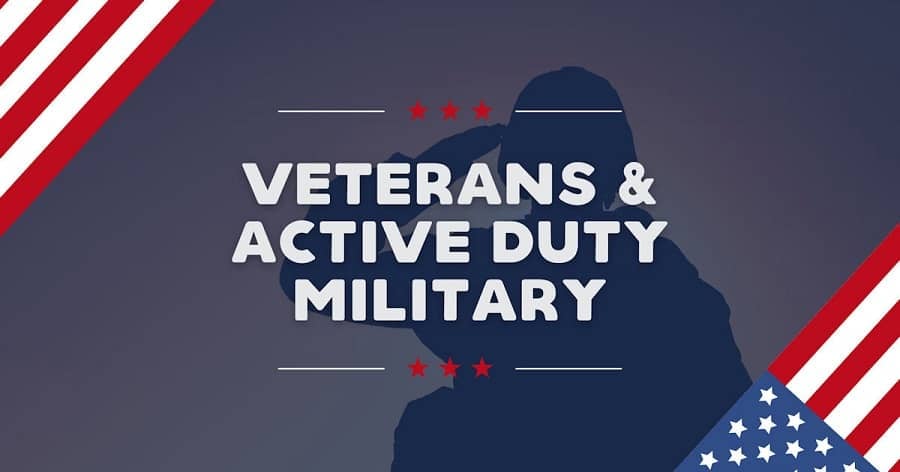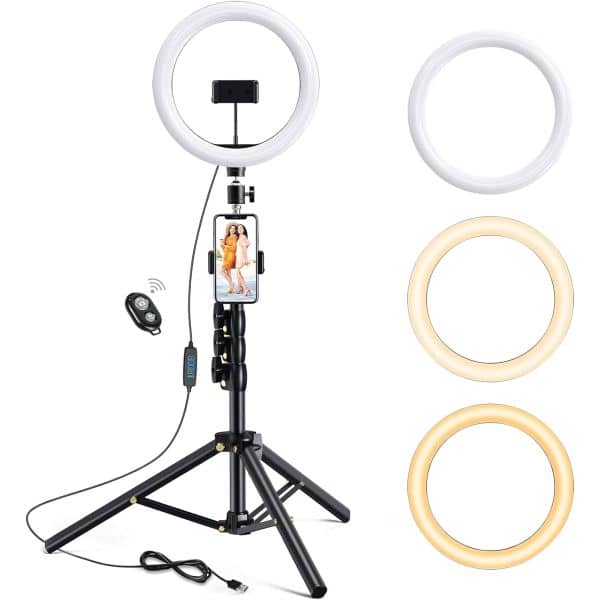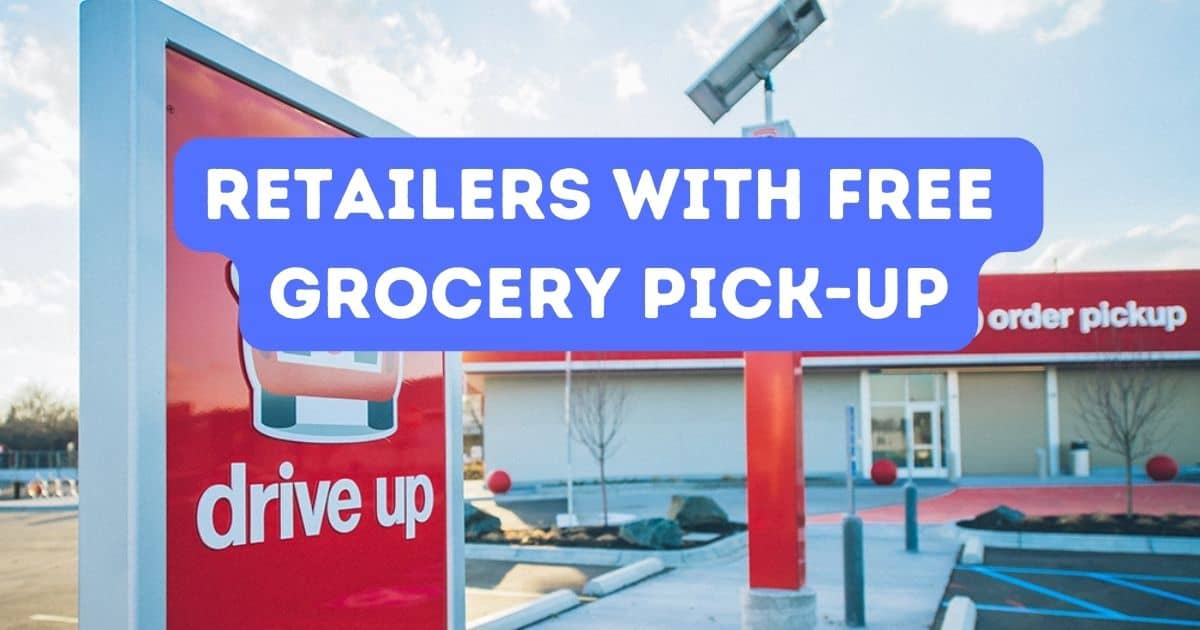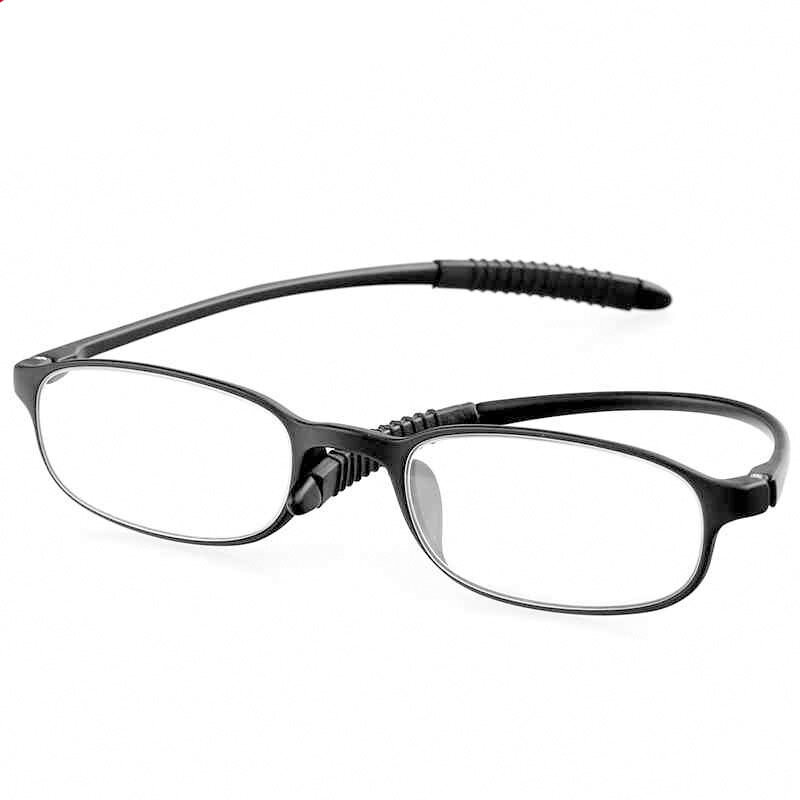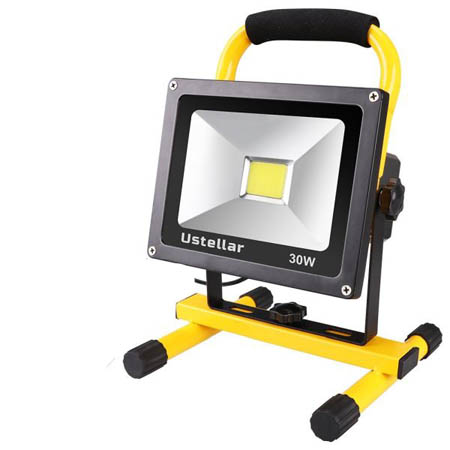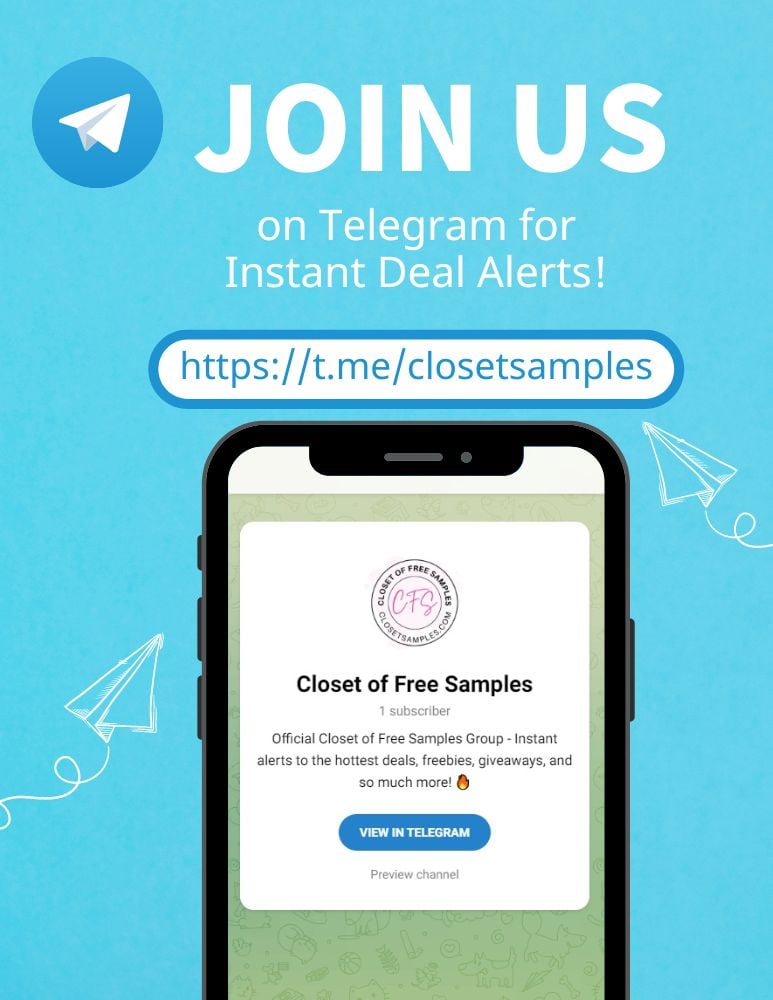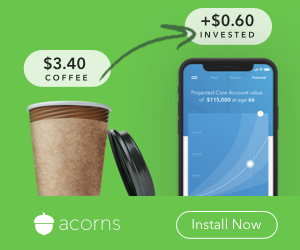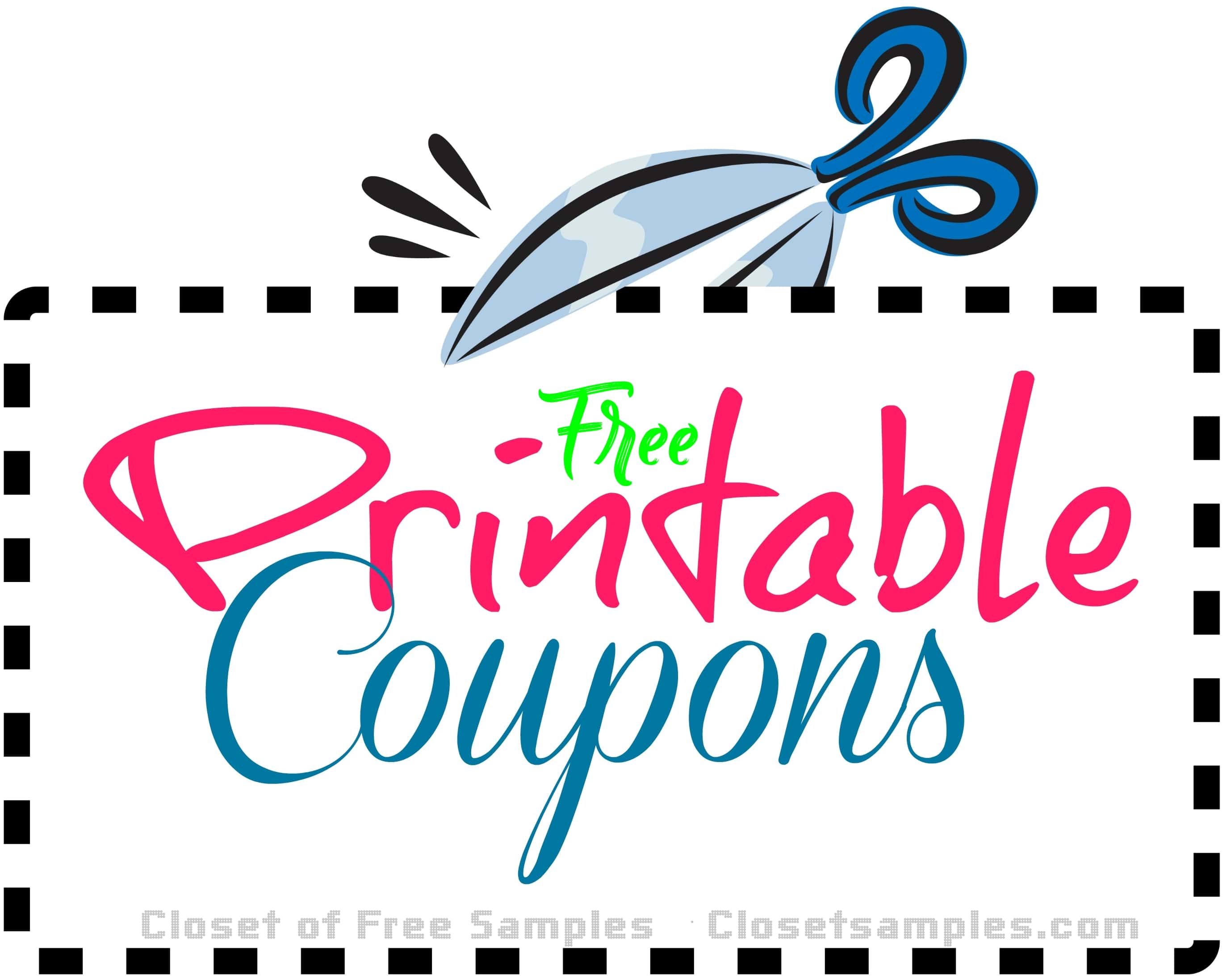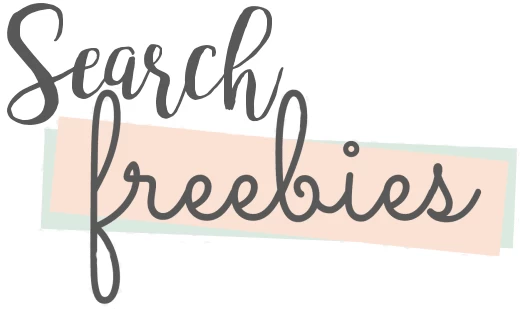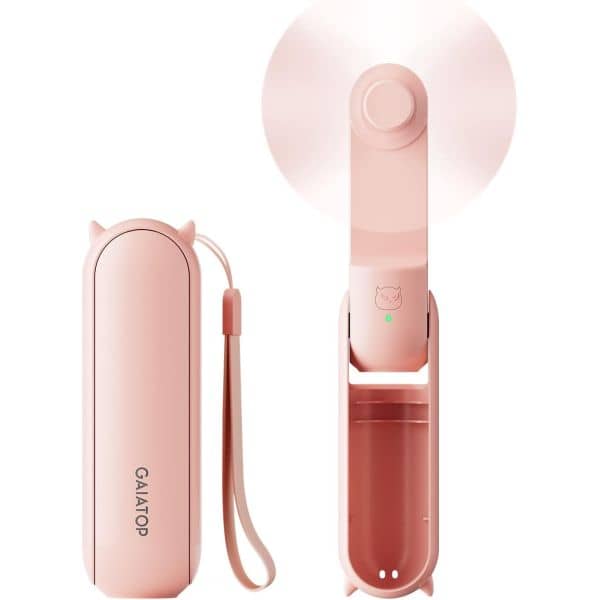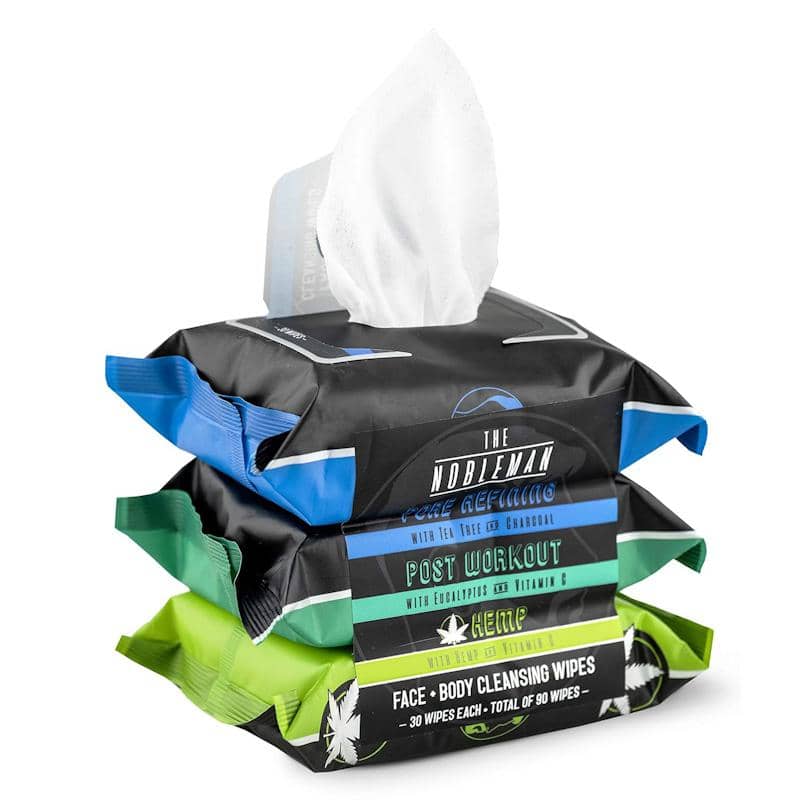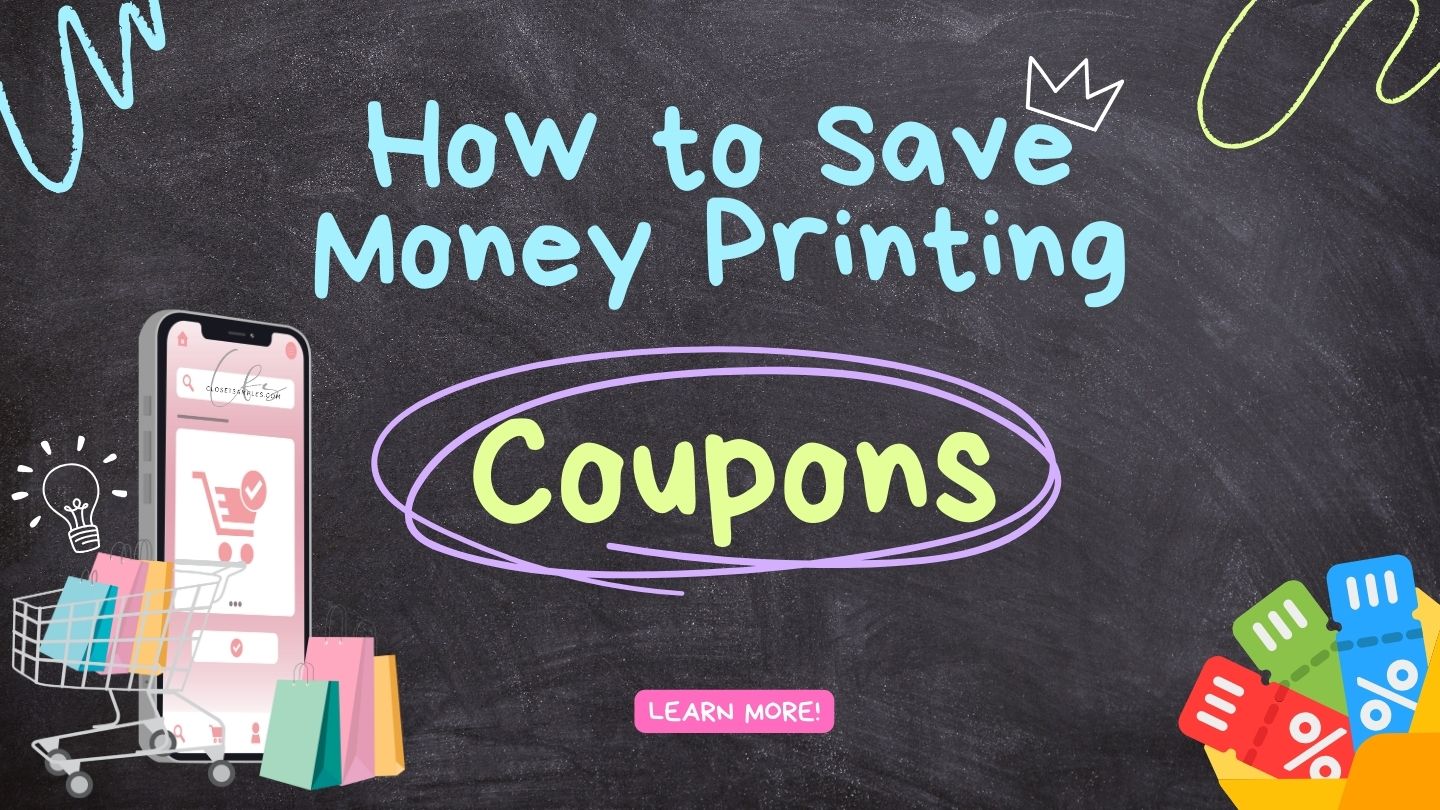In today's world, where healthcare costs continue to rise, finding ways to pay less for prescriptions is crucial. We understand the importance of affordable healthcare, and in this comprehensive guide, we'll explore numerous strategies and tips to help you reduce your prescription expenses without sacrificing quality or safety. Read on to discover how to navigate the complex world of prescription drugs and save money while prioritizing your health.
Table of Contents
- How to Pay Less for Prescriptions
- FAQs
- Conclusion
 Image credit: Freepik
Image credit: Freepik
How to Pay Less for Prescriptions
When it comes to reducing your prescription costs, there are various effective methods to explore. Let's dive into these strategies:
1. Generic Medications - Affordable Alternatives
One of the most straightforward ways to pay less for prescriptions is by opting for generic medications. These drugs have the same active ingredients as their brand-name counterparts but come at a fraction of the cost.
Generic drugs are affordable alternatives to brand-name medications, offering the same active ingredients and effectiveness. Here's how choosing generic medications can help you save on prescription costs:
- Cost Savings: Generic drugs are significantly less expensive than their brand-name counterparts. This cost difference can be substantial, making it a budget-friendly option for many individuals.
- Equivalent Quality: Generic drugs are required to meet the same strict quality and safety standards as brand-name medications. They have the same active ingredients and are equally safe and effective.
- FDA Approval: Generic drugs go through a rigorous approval process by the U.S. Food and Drug Administration (FDA) to ensure their safety and effectiveness.
- Insurance Coverage: Many health insurance plans preferentially cover generic medications, resulting in lower out-of-pocket expenses for policyholders.
- Prescription Savings Programs: Some pharmacies offer prescription savings programs that provide discounts and incentives for choosing generic medications.
- Physician Recommendations: Healthcare providers often recommend generic drugs when they are available and suitable for the patient's condition. They recognize the cost-saving benefits of generics.
- Wide Availability: Generic versions exist for a broad range of medications, including common prescriptions for chronic conditions, making it easier to find affordable options.
- Pharmacy Discounts: Pharmacies may offer discounts on generic drugs to encourage their use.
To maximize your savings with generic medications, consider the following tips:
- Talk to your healthcare provider: Discuss with your physician or pharmacist the possibility of switching to a generic version of your prescribed medication.
- Review your insurance coverage: Understand your insurance plan's formulary to determine how generics are covered and whether there are preferred options.
- Use prescription savings cards: Some prescription savings cards and programs offer additional discounts on generic medications.
- Compare prices: Use online resources and apps to compare the prices of generic drugs at different pharmacies and find the most cost-effective option.
- Be informed: Educate yourself about the generic alternatives available for your specific medications, and discuss them with your healthcare provider.
By opting for generic medications, you can enjoy significant cost savings while still receiving the same therapeutic benefits. It's a practical approach to managing your healthcare expenses and ensuring that you can access the medications you need at an affordable price.
 Image credit: Freepik
Image credit: Freepik
2. Prescription Discount Cards
Prescription discount cards are a valuable resource that can significantly lower your medication costs. These cards are widely available and can be used at most pharmacies.
Prescription discount cards can be found online through various websites and apps. You can also inquire about them at your local pharmacy or ask your healthcare provider for recommendations. Additionally, some healthcare organizations and community programs may distribute these cards to eligible individuals.
There are several online discount card websites where you can obtain prescription discount cards. Some popular options include:
- GoodRx
- RxSaver
- SingleCare
- FamilyWize
- NeedyMeds
- Discount Drug Network
- Easy Drug Card
- ScriptSave WellRx
- USA Rx
These websites offer free or low-cost prescription discount cards that can help you save on your medication expenses.
 Image credit: Freepik
Image credit: Freepik
3. Patient Assistance Programs
Many pharmaceutical companies offer patient assistance programs. These programs can provide free or low-cost medications to individuals who meet specific criteria. Here are some notable organizations that you can explore:
- Partnership for Prescription Assistance (PPA): PPA is a free program that connects patients with assistance programs offered by pharmaceutical companies, government agencies, and non-profit organizations.
- NeedyMeds: NeedyMeds is a non-profit organization that provides information on patient assistance programs, disease-specific resources, and offers a free drug discount card.
- Patient Access Network Foundation (PAN): PAN provides financial assistance to underinsured patients for their out-of-pocket costs, including co-pays, deductibles, and co-insurance.
- CancerCare: CancerCare offers financial assistance for cancer-related medications and covers some transportation costs for cancer patients.
- The Assistance Fund: This organization provides support to individuals with chronic or life-threatening illnesses who require high-cost medications.
- The HealthWell Foundation: HealthWell offers financial assistance to cover prescription medication copayments, deductibles, and premiums for individuals with chronic and life-altering illnesses.
- Patient Advocate Foundation (PAF): PAF provides case management services to help patients access prescribed medications, including financial assistance options.
- National Organization for Rare Disorders (NORD): NORD offers assistance to individuals with rare diseases, including grants for medication and treatment-related expenses.
- RxOutreach: RxOutreach is a non-profit mail-order pharmacy that provides affordable medications to individuals with chronic conditions.
- Cystic Fibrosis Foundation: This foundation offers support to individuals with cystic fibrosis, including assistance programs for medications.
- Arthritis Foundation: The Arthritis Foundation provides resources and support for individuals living with arthritis, including medication assistance programs.
Please note that eligibility criteria, available support, and application processes may vary among these organizations. It's advisable to visit their websites or contact them directly to inquire about the specific assistance programs they offer and how to apply for assistance with medication costs.
Image credit: Freepik
4. Mail-Order Pharmacies
Consider using a mail-order pharmacy to fill your prescriptions. These services often offer lower prices and the convenience of home delivery.
Mail-order pharmacies are a type of pharmacy that allows individuals to order prescription medications through the mail or online and have them delivered to their doorstep. These pharmacies are designed to provide convenience and accessibility for patients who require ongoing or maintenance medications. Here are some key characteristics and advantages of mail-order pharmacies:
- Convenience: Patients can order their medications from the comfort of their home, eliminating the need to visit a physical pharmacy.
- Cost Savings: Mail-order pharmacies often offer lower prices for medications, especially for long-term prescriptions. They can provide a 90-day supply at a reduced cost compared to a 30-day supply from a traditional pharmacy.
- Automatic Refills: Many mail-order pharmacies offer automatic prescription refills, ensuring that patients receive their medications on time without the hassle of reordering.
- Delivery Services: Medications are typically delivered to the patient's home, making it a convenient option, particularly for those with mobility issues or individuals in remote areas.
- Pharmacist Consultation: Patients can often consult with pharmacists via phone or online to address any questions or concerns about their medications.
- Private and Secure: Mail-order pharmacies prioritize patient privacy and confidentiality, and they use secure methods for handling prescription orders.
- Insurance Coverage: Most insurance plans provide coverage for mail-order pharmacy services, making it a cost-effective option for insured individuals.
It's important to note that not all medications are suitable for mail-order delivery, particularly those that require immediate use or refrigeration. Patients should consult with their healthcare providers to determine if mail-order pharmacy services are appropriate for their specific medications and health needs. Additionally, it's essential to choose a reputable and accredited mail-order pharmacy to ensure the quality and safety of the medications received.
Several reputable mail-order pharmacies are available to provide prescription medications and related services. Here are some well-known mail-order pharmacy options:
- Express Scripts Mail Service Pharmacy: A large and widely recognized mail-order pharmacy, Express Scripts offers a broad range of prescription services and medication delivery.
- OptumRx: OptumRx provides mail-order pharmacy services with a focus on convenience, cost savings, and medication management.
- CVS Caremark Mail Service Pharmacy: A branch of CVS Pharmacy, this mail-order service offers a wide selection of prescription medications for home delivery.
- Walgreens Mail Service Pharmacy: Walgreens provides mail-order prescription services, allowing customers to order and receive their medications by mail.
- Humana Pharmacy: Humana offers mail-order prescription services to its members, providing convenience and cost-effective solutions for medication needs.
- Aetna Rx Home Delivery: Aetna's mail-order pharmacy service is accessible to Aetna insurance plan members, offering medication delivery to their homes.
- Cigna Home Delivery Pharmacy: Cigna's mail-order pharmacy service is designed to make it easy for plan members to receive their prescriptions by mail.
- Kaiser Permanente Mail Order Pharmacy: Kaiser Permanente members can take advantage of the convenience of mail-order prescriptions through this service.
- Anthem Mail Service Pharmacy: Anthem offers mail-order pharmacy services to its members, ensuring they have access to their prescribed medications.
- Walmart Mail Service Pharmacy: Walmart provides mail-order pharmacy services, delivering prescription medications and offering competitive prices.
These mail-order pharmacies offer a variety of benefits, including cost savings, convenience, and often the option to consult with pharmacists about your medications. Keep in mind that eligibility for these services may vary depending on your insurance plan or healthcare provider, so it's advisable to check with your specific plan or provider to determine the availability of mail-order pharmacy services for your prescriptions.
 Image credit: Freepik
Image credit: Freepik
5. Compare Pharmacy Prices
Don't settle for the first pharmacy you come across. Prices can vary significantly between different pharmacies, so shop around to find the best deals. Here's how to do it:
Use Online Tools and Apps: There are several websites and smartphone apps designed to help you compare prescription prices. Websites like GoodRx, RxSaver, and LowestMed allow you to enter your medication and location to see a list of nearby pharmacies with their respective prices.
Check Pharmacy Websites: Visit the websites of local pharmacies and chain stores. Many of them have online price lists or tools that allow you to search for the cost of specific medications at their locations.
Call Pharmacies: Contact pharmacies directly by phone. While this method may take more time, it can provide you with the most up-to-date pricing information. Ask for the price of your medication and if they offer any discounts or savings programs.
Consult Your Insurance: If you have health insurance, check with your insurance provider. They may have a tool on their website or offer assistance over the phone to help you find pharmacies with the best prices in your network.
In-Person Visits: Visit local pharmacies in your area and inquire about the cost of your medication. You can do this in person or by phone. Be sure to check both chain pharmacies and independent, local pharmacies.
Consider Online Pharmacies: Online pharmacies often provide competitive pricing. Make sure to choose reputable and licensed online pharmacies to ensure the quality and safety of your medications.
Check for Discounts and Coupons: Some pharmacies offer discounts, coupons, or loyalty programs that can reduce the cost of your medications. Inquire about these options when comparing prices.
Ask Your Healthcare Provider: Consult your healthcare provider about lower-cost alternatives or generic versions of your prescribed medication. They can help you explore options that are more budget-friendly.
Consider Mail-Order Pharmacies: Mail-order pharmacies, as mentioned earlier, can offer competitive prices, particularly for long-term prescriptions. Compare their prices with local options.
Medication Formulary: If you have insurance, review your plan's medication formulary. This document outlines which medications are covered and at what cost. It can help you choose medications that are less expensive under your plan.
When comparing pharmacy prices, keep in mind that medication costs may fluctuate over time, and prices can vary between locations and pharmacies. It's advisable to compare prices periodically and explore all available options to ensure you're getting the best deal on your prescription medications.
Image credit: Freepik
6. Ask for Generic Alternatives
When your doctor prescribes a medication, inquire if there's a generic alternative available. This small change can lead to substantial savings.
7. Use Coupons and Manufacturer Discounts
Keep an eye out for
manufacturer coupons and discounts. These can be found online or provided by your healthcare provider. You can find medication manufacturer coupons and discounts through various sources:
Manufacturer Websites: Many pharmaceutical companies offer coupons, savings cards, or patient assistance programs on their official websites. Search for the manufacturer of your prescribed medication and visit their site to check for available discounts.
Prescription Discount Websites: Websites like GoodRx and NeedyMeds often provide information about manufacturer coupons and discounts for specific medications. You can search for your medication and find available savings options.
Ask Your Healthcare Provider: Your healthcare provider may have information about manufacturer discounts and can help you obtain coupons or savings cards for your prescribed medications.
Pharmacy Loyalty Programs: Some pharmacies have loyalty programs that offer discounts and savings on various medications. Inquire at your local pharmacy about their loyalty program offerings.
Patient Assistance Programs: As mentioned earlier, pharmaceutical companies may have patient assistance programs that provide free or low-cost medications. Check the manufacturer's website or inquire with your healthcare provider about these programs.
Online Coupons and Deal Websites: Websites like Coupons.com and RetailMeNot occasionally feature manufacturer coupons for prescription medications. While less common, it's worth checking these platforms for potential savings.
Prescription Savings Apps: There are apps like SingleCare and RxSaver that can help you find and access manufacturer coupons and discounts for your specific medications.
Check with Your Pharmacy: Your local pharmacy may have information on available manufacturer discounts or be aware of any promotions currently running.
Insurance Provider: If you have health insurance, your insurance provider may offer information on manufacturer coupons and discounts as part of your plan's benefits.
Pharmaceutical Representatives: In some cases, pharmaceutical representatives may provide healthcare providers with coupons or savings information. Ask your healthcare provider if they have any such resources.
Remember that the availability of manufacturer coupons and discounts can vary, and not all medications will have such offers. It's essential to explore multiple sources and stay up-to-date on available savings options for your specific prescription medications.
 Image credit: Freepik
Image credit: Freepik
8. Medication Synchronization
Synchronize your prescription refills so that you can pick up multiple medications on the same day, reducing the number of trips to the pharmacy. Here's how this process works and why it can be beneficial:
How to Synchronize Prescription Refills:
- Talk to Your Healthcare Provider: First, discuss the idea of synchronizing your prescription refills with your healthcare provider. They can help you plan for this by adjusting the refill dates on your prescriptions.
- Identify All Your Medications: Make a list of all the prescription medications you take regularly, including dosage and frequency. Include both long-term medications and short-term ones, such as antibiotics.
- Coordinate Refill Dates: Work with your healthcare provider and pharmacy to align the refill dates for all your medications. The goal is to have them due on the same day each month or at a convenient interval.
Benefits of Synchronizing Prescription Refills:
- Reduced Pharmacy Visits: Synchronizing refills means you can pick up all your medications in a single trip to the pharmacy. This can save time and transportation costs.
- Better Medication Management: It's easier to manage your medications when they're due on the same day. This reduces the risk of missing doses or running out of important medications.
- Improved Medication Adherence: With all your refills synchronized, you're more likely to take your medications as prescribed, leading to better health outcomes.
- Less Chance of Medication Confusion: Picking up multiple medications at once reduces the risk of mixing up medications or experiencing confusion about when to take each one.
- Increased Convenience: Having all your medications on the same refill schedule simplifies your healthcare routine and reduces the need for frequent pharmacy visits.
- Fewer Insurance Hassles: When multiple medications are refilled simultaneously, it can lead to fewer insurance claims and paperwork.
- Consolidated Copayments: If you have copayments for your prescriptions, synchronizing refills can help consolidate these payments into one visit, making it easier to budget for your healthcare costs.
Remember that not all medications may be eligible for synchronization, especially if they have different prescription lengths or need adjustments by your healthcare provider. It's essential to consult with your healthcare provider and pharmacy to ensure that this strategy is suitable for your specific medications and healthcare needs.
 Image credit: Freepik
Image credit: Freepik
9. Health Savings Accounts (HSAs) and Flexible Spending Accounts (FSAs)
Take advantage of HSAs and FSAs to set aside pre-tax funds for medical expenses, including prescriptions.
Taking advantage of Health Savings Accounts (HSAs) and Flexible Spending Accounts (FSAs) to set aside pre-tax funds for medical expenses, including prescriptions, can be a smart financial move. Here's how to do it:
Health Savings Account (HSA):
- Check Eligibility: Ensure you are eligible for an HSA. To qualify, you typically need to be enrolled in a High Deductible Health Plan (HDHP).
- Open an HSA: If you're eligible, open an HSA with a bank, credit union, or financial institution that offers HSA accounts. Your employer may also provide options.
- Contribute Pre-Tax Funds: Contribute money to your HSA directly from your paycheck or as a lump-sum contribution. These contributions are tax-deductible and reduce your taxable income.
- Know Contribution Limits: Be aware of the annual contribution limits set by the IRS. For 2023, the limit for an individual is $3,650, and for a family, it's $7,300. If you're 55 or older, you can make an additional catch-up contribution.
- Use HSA Debit Card: Many HSAs come with a debit card that you can use to pay for qualified medical expenses, including prescriptions, directly from your HSA account.
- Keep Records: Maintain records of your medical expenses and HSA contributions, as this information may be needed for tax purposes.
- Invest Wisely: Some HSAs allow you to invest your contributions, potentially growing your savings over time. Understand the investment options available.
Flexible Spending Account (FSA):
- Check Eligibility: Verify your eligibility for an FSA, which is typically offered through your employer's benefits package.
- Enroll During Open Enrollment: Sign up for an FSA during your employer's open enrollment period. Determine how much money you want to contribute for the year.
- Pre-Tax Contributions: FSA contributions are made through automatic payroll deductions, reducing your taxable income.
- Understand Contribution Limits: Be aware of the contribution limit, which can change annually. For 2023, the limit is $2,950 for Healthcare FSAs.
- Know Expenses Covered: FSAs cover a range of qualified medical expenses, including prescriptions, co-pays, deductibles, and some over-the-counter medications. Familiarize yourself with the complete list of eligible expenses.
- Use the FSA Debit Card: Many FSAs provide a debit card for convenient access to your funds. You can use this card to pay for prescriptions at the pharmacy.
- Plan Carefully: Estimate your expected medical expenses for the year. FSAs have a "use it or lose it" rule, meaning any unspent funds at the end of the plan year may be forfeited.
- Submit Reimbursement Claims: If you don't have a debit card, you can typically submit reimbursement claims to your FSA administrator for eligible expenses, including prescription receipts.
By taking advantage of HSAs and FSAs, you can reduce your tax liability while saving for medical expenses, including prescriptions. Be sure to stay informed about the specific rules and limits for these accounts and plan your contributions accordingly.
 Image credit: Freepik
Image credit: Freepik
10. Government Assistance Programs
Explore government assistance programs like Medicaid and Medicare to see if you qualify for prescription drug coverage. These programs are designed to provide healthcare benefits, including assistance with the cost of prescription medications, to eligible individuals. Here's how to check your eligibility and understand these programs:
Medicaid: Medicaid is a state and federally funded program that offers comprehensive healthcare coverage, including prescription drug benefits, to low-income individuals and families. Eligibility requirements vary by state, but common factors include income, family size, and certain medical conditions. Here's how to explore Medicaid coverage for prescription drugs:
- Check Eligibility: Visit the Medicaid website for your state or use the federal Healthcare.gov website to determine if you meet the income and other criteria for Medicaid. Eligibility can vary based on factors such as age, disability, and family status.
- Apply for Medicaid: If you believe you qualify, you can apply for Medicaid through your state's Medicaid agency or through the Healthcare.gov website during the open enrollment period. Be prepared to provide income and household information.
- Prescription Drug Coverage: If you are eligible for Medicaid, you will likely receive prescription drug coverage as part of your benefits. This coverage can vary by state, so it's important to understand the specific formulary and copayment requirements.
Medicare: Medicare is a federal health insurance program primarily for individuals aged 65 and older, as well as for some younger individuals with disabilities. Medicare has different parts that cover various aspects of healthcare, including prescription medications. Here's how to explore Medicare coverage for prescription drugs:
- Check Eligibility: Most individuals become eligible for Medicare at age 65. You can check your eligibility by visiting the official Medicare website or contacting the Social Security Administration.
- Enroll in Medicare: If you're eligible, you can enroll in Medicare during the initial enrollment period or special enrollment periods if you have certain circumstances, such as retiring from work.
- Part D Prescription Drug Coverage: Medicare Part D is the prescription drug coverage component. You can enroll in a Part D plan during the open enrollment period. These plans are offered by private insurance companies and provide coverage for a wide range of prescription medications.
- Medicare Advantage Plans: Some Medicare Advantage plans (Part C) include prescription drug coverage. If you choose a Medicare Advantage plan, check if it covers your specific medications.
To explore these government assistance programs, you can also seek assistance from local social service agencies, healthcare providers, or insurance counselors who can help you understand your eligibility and guide you through the application process. Accessing Medicaid or Medicare can significantly reduce the cost of prescription medications and improve your overall healthcare coverage.
 Image credit: Freepik
Image credit: Freepik
11. Prescription Assistance Foundations
Some non-profit organizations and foundations provide financial assistance for expensive medications. Research and reach out to these organizations for support. Here are some notable organizations and foundations (most of these are all linked above as well):
- Patient Access Network Foundation (PAN): PAN offers financial assistance to underinsured patients, helping with out-of-pocket costs for expensive medications, including co-pays and deductibles.
- The Assistance Fund: This organization provides support for individuals with chronic or life-threatening illnesses, offering assistance to cover the cost of high-priced medications.
- Good Days: Good Days focuses on providing financial support to individuals with chronic or life-altering conditions, helping them access costly medications and necessary treatments.
- The HealthWell Foundation: HealthWell assists patients with chronic and life-altering diseases by offering grants to cover prescription medication co-pays, premiums, and other healthcare expenses.
- NeedyMeds: NeedyMeds is a comprehensive resource that connects individuals to various patient assistance programs and foundations offering financial support for medications.
- CancerCare: CancerCare provides financial assistance for cancer-related medications, as well as support for transportation costs and other expenses related to cancer treatment.
- National Organization for Rare Disorders (NORD): NORD offers support to individuals with rare diseases, including financial assistance for expensive medications and treatments.
- Leukemia & Lymphoma Society (LLS): LLS offers financial aid to blood cancer patients, including assistance with the cost of medications.
- Cystic Fibrosis Foundation: This foundation provides financial support for individuals with cystic fibrosis, helping them access specialized medications and treatments.
- Arthritis Foundation: The Arthritis Foundation offers assistance programs for individuals living with arthritis, including support for costly medications and treatments.
- American Liver Foundation: This foundation provides financial assistance to individuals with liver diseases to help cover the cost of medications and medical expenses.
- American Heart Association: The American Heart Association may offer assistance programs for individuals with heart-related conditions, including support for prescribed medications.
When seeking financial assistance for expensive medications, it's essential to research each organization's eligibility criteria, application process, and available support. Additionally, inquire with your healthcare provider or pharmacist for guidance on accessing these resources, as they may have valuable information on available programs and foundations.
 Image credit: Freepik
Image credit: Freepik
12. Buy in Bulk
If you have a long-term prescription, consider purchasing a 90-day supply. This often comes at a lower cost per pill compared to a 30-day supply. Here are some steps to consider when purchasing medications in larger quantities:
Consult Your Healthcare Provider: Before purchasing medication in bulk, discuss your intention with your healthcare provider. They can assess your specific medical needs, potential drug interactions, and ensure that buying in bulk is safe and appropriate for your condition.
Request Larger Prescriptions: If your healthcare provider agrees that buying in bulk is a suitable option, ask them to prescribe a larger quantity of the medication. Be sure to discuss the ideal quantity and any potential issues related to storage and expiration.
Check Your Insurance: Review your health insurance policy to determine whether it covers prescription medication refills in larger quantities. Some insurance plans encourage 90-day supplies, which can save money and reduce the need for frequent refills.
Understand Medication Storage and Expiration: Ensure that you have the proper storage conditions for your medications. Many drugs need to be stored in a cool, dry place, while others require refrigeration. Pay attention to expiration dates and make sure the medication will be used before it expires.
Discuss Pricing and Discounts: Speak with your pharmacist about the pricing of medications in larger quantities. They may offer discounts for bulk purchases, especially for generic drugs. Inquire about any available savings programs or prescription discount cards.
Online Pharmacies: Explore online pharmacies that offer the option to purchase larger quantities of medication. Ensure the online pharmacy is reputable and accredited. Verify the legitimacy of the online source before making a purchase.
Mail-Order Pharmacies: Some health insurance plans or pharmacy benefit programs offer mail-order pharmacy services that provide 90-day supplies of medication at reduced prices.
Generic Medications: If applicable, ask your healthcare provider about generic equivalents of your medication. Generic drugs are typically more affordable, making it cost-effective to buy in bulk.
Safety Precautions: Be cautious when considering the purchase of medication in bulk, especially when buying online. Ensure that the pharmacy or source is licensed, and the medication is FDA-approved.
Remember that not all medications are suitable for bulk purchasing, and your healthcare provider's guidance is essential. Additionally, storage conditions and expiration dates must be observed to ensure the effectiveness and safety of the medication. Always prioritize safety and adhere to your healthcare provider's recommendations when considering bulk purchases of prescription drugs.
 Image credit: Freepik
Image credit: Freepik
13. Consult a Pharmacist
Pharmacists are knowledgeable about medications and can provide advice on how to save money while ensuring your health needs are met.
14. Price Matching Policies
Some pharmacies offer price matching policies, so if you find a lower price elsewhere, they may match it or even offer a better deal. These policies are designed to help customers obtain the best prices for their prescription medications and other products. Here's how price matching at pharmacies generally works:
- Inquire with the Pharmacy: If you find a lower price for a prescription medication at another pharmacy, contact your preferred pharmacy and inform them of the lower price you've discovered.
- Provide Proof: Pharmacies that offer price matching may require you to provide proof of the lower price, such as a competitor's advertisement, website listing, or prescription receipt.
- Pharmacy Verification: The pharmacy will verify the lower price to ensure it's for the same medication, dosage, and quantity. They may also confirm the legitimacy of the competitor's price.
- Price Adjustment: If the pharmacy verifies the lower price, they will typically match that price for your prescription, ensuring that you pay the lower amount.
Here are a few key points to keep in mind when considering price matching at pharmacies:
- Eligibility: Not all pharmacies offer price matching, and the policies may vary. It's advisable to check with your specific pharmacy to determine if they provide this service.
- Competitor Requirements: Some pharmacies may have specific criteria for matching prices, such as the competitor being within a certain radius or having a physical store.
- Online Pharmacies: Some pharmacies may match prices with online competitors, while others may not. Be sure to clarify the pharmacy's policy regarding online price matching.
- Prescription Discount Cards and Coupons: Price matching policies may not be applicable when using prescription discount cards or coupons, as these already offer reduced prices.
Price matching at pharmacies can be a useful way to ensure you receive competitive pricing for your medications. Always consult with your preferred pharmacy to understand their specific price matching policy and requirements, and be prepared to provide the necessary documentation to facilitate the process.
 Image credit: Freepik
Image credit: Freepik
15. Medication Reviews
Regularly reviewing your medications with your healthcare provider is a crucial step in ensuring you're on the most cost-effective and appropriate treatment plan. Here's why it's important and how to go about it:
Importance of Medication Review:
- Cost-Efficiency: Medications may change in price or availability over time. By reviewing your medications, you can identify cost-effective alternatives or generic versions.
- Optimal Treatment: Healthcare evolves, and new treatments may become available. Discussing your medications with your provider ensures you're receiving the most current and effective treatment for your condition.
- Avoiding Drug Interactions: Medications can interact with each other, potentially causing adverse effects or reducing their efficacy. Regular reviews help detect and manage potential interactions.
- Dosage Adjustments: Your medical needs may change, requiring adjustments to your medication dosages. Regular reviews help fine-tune your treatment plan for optimal results.
How to Review Your Medications:
- Schedule an Appointment: Contact your healthcare provider to schedule a medication review. This can be part of your regular check-up or a specific appointment focused on your medications.
- List Your Medications: Before the appointment, create a list of all the medications you are currently taking. Include prescription drugs, over-the-counter medications, vitamins, and supplements.
- Update Your Provider: During the review, inform your healthcare provider about any changes in your health, such as new diagnoses, allergies, or side effects from your current medications.
- Discuss Cost and Coverage: Talk to your provider about the cost of your medications and whether your insurance plan covers them. If you're facing financial challenges, inquire about more affordable alternatives or assistance programs.
- Review Medication Goals: Ensure that your provider understands your treatment goals, and discuss whether your current medications align with those goals.
- Explore Generic Options: If available, inquire about generic equivalents of your prescription drugs. Generic medications are often more affordable and equally effective.
- Address Side Effects: Mention any side effects or discomfort you may be experiencing with your current medications. Your provider can explore alternatives or adjust dosages to minimize side effects.
- Discuss Over-the-Counter Medications: Include any non-prescription medications, vitamins, or supplements in your discussion. Some over-the-counter products can interact with prescription drugs.
- Get a Revised Medication Plan: After the review, your healthcare provider may suggest changes to your medication plan. This could involve adding, discontinuing, or adjusting medications.
- Ask Questions: Don't hesitate to ask questions and seek clarification during the medication review. It's important to have a clear understanding of your treatment plan.
By regularly reviewing your medications with your healthcare provider, you can ensure that you're receiving the most suitable, cost-effective, and safe treatment for your health condition. This proactive approach contributes to your well-being and helps you make informed decisions about your healthcare.
 Image credit: Freepik
Image credit: Freepik
16. Stay Informed
Stay updated on healthcare news and new prescription options. Sometimes, newer drugs can be more affordable and effective. Here's why it's important and how to do it:
Importance of Staying Updated:
- Treatment Advances: Healthcare is constantly evolving, with new medications and therapies being developed. Staying informed helps you access the latest, potentially more effective treatments.
- Cost Savings: Newer drugs may be more cost-effective due to competition and advances in pharmaceutical research. By staying updated, you can identify more affordable options.
- Safety: New medications are rigorously tested for safety and efficacy. Being aware of the latest options can help you make safer choices.
How to Stay Updated on Healthcare News and Medications:
- Follow Trusted Sources: Stay connected with reputable healthcare news sources, such as medical journals, government health agencies, and well-established healthcare websites. These sources often provide updates on new treatments.
- Consult Your Healthcare Provider: Regularly discuss your treatment options with your healthcare provider. They can inform you about the latest advancements and help you make informed decisions.
- Join Patient Support Groups: Many patient support groups and advocacy organizations offer information on the latest treatments and research in specific medical fields. Here are some patient support groups for various medical conditions:
- American Cancer Society: The American Cancer Society offers support groups for cancer patients and their families, covering a wide range of cancer types.
- National Alliance on Mental Illness (NAMI): NAMI provides support groups for individuals and families affected by mental health conditions.
- American Heart Association: The American Heart Association offers resources and support for individuals with heart-related conditions.
- Alzheimer's Association: This organization provides support groups for individuals living with Alzheimer's disease and their caregivers.
- Arthritis Foundation: The Arthritis Foundation offers support for people with arthritis and related conditions.
- Diabetes Support Groups: Many local and national organizations offer support for individuals with diabetes. The American Diabetes Association is a key resource.
- National Multiple Sclerosis Society: This organization offers support for individuals living with multiple sclerosis (MS).
- Epilepsy Foundation: The Epilepsy Foundation provides support and resources for people living with epilepsy.
- Crohn's & Colitis Foundation: Support groups are available for individuals with Crohn's disease and ulcerative colitis.
- Autism Speaks: Autism Speaks offers resources and support for individuals with autism and their families.
- National Kidney Foundation: This foundation provides support for individuals dealing with kidney disease.
- Parkinson's Foundation: Support groups are available for people living with Parkinson's disease.
- Cystic Fibrosis Foundation: The Cystic Fibrosis Foundation offers support and resources for individuals with cystic fibrosis.
- Lupus Foundation of America: This organization provides support for individuals with lupus.
- National Psoriasis Foundation: The National Psoriasis Foundation offers support for people with psoriasis and psoriatic arthritis.
- Mental Health America: Mental Health America provides resources and support for individuals with mental health conditions.
- Sjögren's Syndrome Foundation: Support groups are available for individuals with Sjögren's syndrome.
- Myasthenia Gravis Foundation of America: This foundation offers support for individuals with myasthenia gravis.
- National Eating Disorders Association: NEDA provides resources and support for individuals with eating disorders.
- Rare Disease Organizations: Many rare disease organizations offer support groups for individuals with specific rare conditions. Examples include the National Organization for Rare Disorders (NORD) and the Ehlers-Danlos Society.
- Subscribe to Newsletters: Sign up for newsletters from healthcare organizations and patient advocacy groups. These newsletters often include updates on new medications and treatment options. Here are some newsletters from reputable healthcare organizations:
- Mayo Clinic Newsletter: Mayo Clinic offers a comprehensive newsletter covering a wide range of health and medical topics.
- Cleveland Clinic Health Essentials: The Cleveland Clinic's Health Essentials newsletter provides insights into medical research, wellness, and general health information.
- Harvard Health Publishing Newsletter: Harvard Health Publishing offers newsletters on various health topics, including nutrition, fitness, and disease management.
- Johns Hopkins Medicine Newsletter: Johns Hopkins Medicine provides newsletters covering health and medical updates, research, and patient stories.
- WebMD Daily Newsletter: WebMD offers a daily newsletter that delivers health news, expert advice, and updates on medical breakthroughs.
- NIH News in Health: The National Institutes of Health (NIH) offers "News in Health," a newsletter that provides valuable information on health and medical research.
- American Heart Association Heart Insight: This newsletter from the American Heart Association focuses on heart health, offering tips for a healthy lifestyle.
- CDC Health Matters: The Centers for Disease Control and Prevention (CDC) provide newsletters covering various public health topics and updates.
- Alzheimer's Association Newsletter: The Alzheimer's Association offers newsletters with information about Alzheimer's disease and dementia.
- National Cancer Institute Cancer Currents: The National Cancer Institute's Cancer Currents newsletter covers the latest developments in cancer research and treatment.
- Arthritis Foundation Newsletter: The Arthritis Foundation offers newsletters focusing on arthritis management, research, and patient stories.
- American Diabetes Association Newsletter: This newsletter provides information on diabetes management, research, and support for individuals with diabetes.
- American Lung Association Lung Health Monthly: The American Lung Association's newsletter focuses on lung health, respiratory conditions, and healthy living.
- Mental Health America Newsletter: Mental Health America offers newsletters with insights into mental health, wellness, and advocacy.
- National Institute on Aging (NIA) News: NIA provides newsletters covering aging, caregiving, and Alzheimer's disease.American Stroke Association Stroke Connection: The American Stroke Association offers the "Stroke Connection" newsletter, focusing on stroke awareness and recovery.
- National Eating Disorders Association (NEDA) Newsletter: NEDA provides newsletters with information on eating disorders and support for individuals and their families.
- National Psoriasis Foundation Psoriasis Advance: The National Psoriasis Foundation's newsletter offers insights into psoriasis and psoriatic arthritis management.
- Parkinson's Foundation Newsletter: The Parkinson's Foundation provides newsletters with updates on Parkinson's disease research and support.
- Lupus Foundation of America Newsletter: The Lupus Foundation of America offers newsletters with information on lupus and resources for patients.
- Attend Medical Conferences: If possible, consider attending medical conferences or seminars related to your health condition. These events provide insights into the latest research and therapies.
- Use Prescription Savings Apps: There are apps and websites that can help you stay informed about medication options and provide discounts or coupons for prescription drugs.
- Read Package Inserts: When you receive a new prescription, read the package insert and any accompanying information. It often contains details about the medication's effectiveness and safety.
- Participate in Clinical Trials: Depending on your condition, you may have the opportunity to participate in clinical trials for new treatments. Your healthcare provider can guide you in this regard. Here are some reliable sources and methods to find clinical trials:
- ClinicalTrials.gov: ClinicalTrials.gov is a comprehensive database provided by the U.S. National Library of Medicine. It offers a vast repository of clinical trials, both in the United States and around the world. You can search for trials by condition, location, and other criteria.
- Patient Advocacy Organizations: Many patient advocacy organizations and disease-specific foundations maintain lists of clinical trials related to specific health conditions. These organizations are often excellent resources for finding relevant trials.
- Academic Medical Centers: Leading medical institutions and academic medical centers often conduct clinical trials. Check the websites of these institutions, or contact their research departments, to inquire about available trials.
- Cancer Centers: If you're interested in cancer-related clinical trials, consider visiting the websites of renowned cancer centers such as the MD Anderson Cancer Center or the Dana-Farber Cancer Institute.
- Physicians and Specialists: Consult your healthcare provider or specialists related to your condition. They may be aware of clinical trials that are suitable for your specific health needs.
- Government Health Agencies: In addition to ClinicalTrials.gov, other government agencies, such as the National Institutes of Health (NIH) or the National Cancer Institute (NCI), may provide information on clinical trials.
- ResearchMatch: ResearchMatch is a volunteer registry connecting individuals interested in clinical trials with researchers. You can create a profile, and the system will notify you when relevant trials become available.
- Online Trial Search Tools: Various websites and search tools, such as Antidote, CenterWatch, and EmergingMed, specialize in helping individuals find clinical trials based on their conditions and locations.
- Social Media and Online Communities: Some patient support groups and online health communities share information about clinical trials and research opportunities. Participating in these communities can help you stay informed.
- University Research Departments: Contact research departments at universities near you to inquire about ongoing clinical trials. Universities often conduct medical research and may welcome participants.
- Healthcare Provider Databases: Certain healthcare providers maintain their databases of clinical trials. You can ask your healthcare provider if they have information on available trials.
- Local Hospitals: Local hospitals may conduct clinical trials. Check with the research departments or inquire at the hospital's front desk.
- Ask Questions: Don't hesitate to ask your healthcare provider about new treatment options or alternatives to your current medications. They can provide valuable insights.
- Check with Your Pharmacist: Pharmacists are knowledgeable about medications and can provide information on new drug options and potential cost savings.
Remember that when considering new medications, it's important to discuss them with your healthcare provider to ensure they are appropriate for your specific health needs and that you understand their potential benefits, risks, and costs. Staying informed about healthcare news and treatment options empowers you to make well-informed decisions about your health.
 Image credit: Freepik
Image credit: Freepik
17. Online Pharmacies
Online pharmacies often have competitive prices and offer the convenience of home delivery. Here's why they are increasingly popular and how to make the most of this option:
Advantages of Online Pharmacies:
- Cost Savings: Online pharmacies often provide medications at competitive prices, and they may offer discounts, bulk purchase options, and generic alternatives, resulting in potential cost savings.
- Convenience: Ordering medications from the comfort of your home or office is convenient, especially for individuals with limited mobility or busy schedules.
- Privacy: Online pharmacies provide a discreet way to obtain sensitive medications, as you can order without the need for in-person interactions.
- Access to a Wide Range of Medications: Online pharmacies may offer a broader selection of medications, including those that may not be readily available at local pharmacies.
- Home Delivery: Medications are delivered directly to your doorstep, saving you time and effort. This is particularly helpful for individuals with chronic conditions who need regular refills.
- Reduced Wait Times: Avoid long queues and waiting times at physical pharmacies, as you can place orders online at your convenience.
Tips for Using Online Pharmacies:
- Choose a Legitimate Online Pharmacy: Ensure that the online pharmacy is licensed, registered, and operates in compliance with local and national regulations. Look for Verified Internet Pharmacy Practice Sites (VIPPS) certification.
- Prescription Requirement: Be cautious of online pharmacies that do not require a valid prescription for prescription medications. Legitimate online pharmacies always ask for a prescription from a healthcare provider.
- Consult Your Healthcare Provider: Before switching to an online pharmacy, consult your healthcare provider to ensure it's a suitable option for your specific medications and conditions.
- Check for Secure Transactions: Ensure that the website uses secure and encrypted connections for transactions to protect your personal and financial information.
- Research Medications: Verify the authenticity of the medications offered by the online pharmacy, and confirm that they are sourced from reputable manufacturers.
- Read Reviews and Testimonials: Look for reviews and testimonials from other customers to gauge the reliability and reputation of the online pharmacy.
- Verify Customer Support: Ensure that the online pharmacy offers accessible customer support to address any concerns or inquiries.
- Look for a Physical Address: A legitimate online pharmacy should have a physical address and contact information readily available.
- Be Cautious of Too-Good-to-Be-True Deals: Beware of online pharmacies offering medications at significantly lower prices than established market rates; such deals may be suspicious.
- Regularly Check Your Medications: Upon receiving your medication order, verify that the medications match your prescription and packaging appears authentic.
Online pharmacies can be a convenient and cost-effective option for obtaining medications, but due diligence is essential to ensure a safe and secure experience. When used responsibly, online pharmacies offer a valuable service for many individuals.
 Image credit: Freepik
Image credit: Freepik
18. Purchase Over-the-Counter Alternatives
In certain cases, over-the-counter (OTC) alternatives can provide an effective and cost-saving option compared to prescription medications. Here are some considerations for using OTC alternatives:
Advantages of OTC Alternatives:
- Cost Savings: OTC medications are generally more affordable than prescription drugs, making them an economical choice for some health conditions.
- Convenience: OTC products are readily available at pharmacies, supermarkets, and online, eliminating the need for a doctor's prescription.
- Self-Management: OTC alternatives empower individuals to self-manage common, mild, or short-term health issues without the need for a healthcare provider's involvement.
- Quick Access: OTC products are accessible and can be obtained promptly, which can be crucial for managing acute health symptoms.
- Reduced Healthcare Costs: Opting for OTC medications can help minimize healthcare costs, especially for those with high-deductible insurance plans.
Considerations for Using OTC Alternatives:
- Consult a Healthcare Provider: It's essential to consult your healthcare provider before substituting a prescription medication with an OTC alternative. Some conditions require specialized treatment and monitoring.
- Read Labels and Dosage Instructions: Pay close attention to the label and dosage instructions on OTC medications to ensure proper use and safety.
- Know Your Condition: Understand the nature and severity of your health condition. OTC alternatives are suitable for mild or self-limiting conditions, but certain illnesses require prescription treatment.
- Manage Chronic Conditions: If you have a chronic condition, work with your healthcare provider to determine whether OTC alternatives can complement your prescription medications.
- Monitor for Interactions: Be aware of potential interactions between OTC products and any prescription medications you may be taking. Discuss these interactions with your healthcare provider.
- Follow Guidelines: Adhere to OTC medication guidelines, including recommended dosages and the duration of use. Using OTC products as directed is essential for safety and effectiveness.
- Report Side Effects: If you experience adverse effects or your symptoms worsen while using an OTC alternative, consult your healthcare provider.
- Consider Generic Options: Many OTC products offer generic or store-brand versions that are equally effective and more budget-friendly.
- Evaluate Long-Term Costs: While OTC alternatives may be cheaper in the short term, consider the long-term costs, including potential complications, when deciding between OTC and prescription treatments.
- Stay Informed: Continuously educate yourself about OTC alternatives and health conditions. Knowledge empowers you to make informed decisions about your healthcare.
While OTC alternatives can be valuable for certain conditions, the appropriateness of their use depends on individual health circumstances and the specific condition being treated. Consulting with your healthcare provider is essential to determine the most suitable and cost-effective treatment approach for your health needs.
 Image credit: Freepik
Image credit: Freepik
19. Wellness Programs
Some employers offer wellness programs that include prescription cost reduction benefits. Check with your HR department for details. These programs can encompass a wide range of initiatives and services. Here are some common components of workplace wellness programs:
- Health Screenings: Employers may provide free or low-cost health screenings, such as blood pressure checks, cholesterol testing, and blood sugar monitoring.
- Fitness and Exercise Programs: Wellness programs may include access to on-site fitness facilities, exercise classes, or discounts on gym memberships.
- Nutrition Counseling: Employees may have access to nutritionists or dietitians for personalized dietary advice and guidance.
- Mental Health Support: Many wellness programs offer mental health resources, including counseling services, stress management workshops, and access to mental health apps.
- Smoking Cessation Programs: Employers may provide smoking cessation resources and support to help employees quit smoking.
- Weight Management Programs: Wellness programs often include weight loss and weight management support, such as weight loss challenges and healthy eating initiatives.
- Ergonomics and Workplace Safety: Employers may offer ergonomic assessments and training to improve workplace safety and reduce the risk of injuries.
- Wellness Challenges: Employers may organize wellness challenges, such as step-count competitions, to encourage physical activity and healthy habits.
- Health Education Workshops: Wellness programs may feature workshops on various health topics, such as heart health, diabetes management, and healthy cooking.
- Biometric Testing: Some employers conduct biometric tests to assess employees' health metrics, like BMI and cholesterol levels, as part of their wellness programs.
- Financial Wellness: Financial wellness programs may provide guidance on budgeting, saving, and managing financial stress.
- Maternity and Parental Support: Employers may offer resources for expectant parents, including maternity and parental leave information and support groups.
- On-Site Medical Clinics: Larger employers may have on-site medical clinics where employees can receive basic healthcare services and consultations.
- Healthy Snacks and Meals: Employers may offer healthy food options in cafeterias or break rooms and promote nutritious eating habits.
- Health Challenges and Rewards: Employers may offer incentives and rewards for participating in wellness activities and meeting health goals.
- Health Fairs: Wellness fairs can provide employees with information about various health-related topics and services.
- Telehealth Services: Some wellness programs include access to telehealth services for virtual medical consultations.
- Fitness Trackers and Wearables: Employers may distribute fitness trackers and wearables to encourage physical activity and monitor health metrics.
These are just a few examples of the components that employers may include in their wellness programs. The specific offerings can vary widely from one company to another, with some organizations tailoring their programs to meet the unique needs and preferences of their employees.
Image credit: Freepik
20. Negotiate with Your Healthcare Provider
In some cases, you can negotiate with your healthcare provider for lower-cost alternatives or samples. Negotiating with your healthcare provider for lower-cost alternatives or samples can be an effective way to manage healthcare expenses, especially when faced with high medication costs. Here are some steps to consider when discussing cost-saving options with your healthcare provider:
1. Open and Honest Communication: Start the conversation with your healthcare provider by expressing your concerns about the cost of your prescribed medication. Open and honest communication is key.
2. Inquire About Generic Options: Ask your healthcare provider if there are generic versions of the prescribed medication available. Generic drugs are typically more affordable and equally effective as brand-name medications.
3. Explore Therapeutic Alternatives: Discuss with your healthcare provider whether there are alternative medications or treatments that may be more cost-effective. They can recommend options that meet your medical needs and budget.
4. Request Samples: Inquire if your healthcare provider can provide you with
samples of the prescribed medication. This allows you to try the medication before committing to a full prescription and can save you money.
5. Investigate Patient Assistance Programs: Some pharmaceutical companies offer patient assistance programs that provide free or low-cost medications to individuals who meet specific criteria. Your healthcare provider can help you determine if you qualify.
6. Discuss Dosing Adjustments: In some cases, it may be possible to adjust the dosage of a medication to reduce costs while maintaining effectiveness. Your healthcare provider can evaluate this option.
7. Review Your Insurance Coverage: Confirm with your healthcare provider whether your insurance plan covers the prescribed medication. They can help you explore formulary alternatives that may be covered.
8. Inquire About Coupons or Discounts: Ask your healthcare provider if they have access to manufacturer coupons or discounts that can lower the cost of the medication. These coupons are sometimes available for specific medications.
9. Consult a Pharmacist: Pharmacists are knowledgeable about medication options and costs. Your healthcare provider may collaborate with a pharmacist to find cost-effective alternatives.
10. Consider Splitting Pills: For certain medications, it may be possible to get a higher dosage and split the pills to achieve the prescribed dosage. This can be a cost-saving strategy if your healthcare provider approves.
11. Research Patient Assistance Organizations: Some nonprofit organizations and foundations provide financial assistance for expensive medications. Your healthcare provider can help you find suitable resources.
12. Evaluate Long-Term Costs: When discussing alternatives, consider not only the immediate cost but also the long-term cost-effectiveness of the treatment plan.
Remember that your healthcare provider's primary concern is your health and well-being. They can work with you to find cost-effective solutions without compromising the quality of your care. Open dialogue and collaboration with your healthcare provider can lead to more affordable and suitable healthcare options.
 Image credit: Freepik
Image credit: Freepik
21. Regular Health Check-ups
Staying proactive about your health can lead to fewer prescriptions and less money spent on medications. Here's how staying proactive about your health can contribute to these benefits:
1. Healthy Lifestyle Choices: Maintaining a healthy lifestyle by eating a balanced diet, staying physically active, and managing stress can lower the risk of developing chronic conditions that may require medications.
2. Preventive Care: Regular check-ups and preventive screenings can help detect health issues early, allowing for timely interventions that may prevent the need for medications or reduce the severity of a condition.
3. Vaccinations: Staying up-to-date on vaccinations can prevent infectious diseases, reducing the need for medications to treat or manage those illnesses.
4. Medication Adherence: Adhering to prescribed medications as directed by your healthcare provider can help manage existing conditions effectively and prevent the worsening of symptoms.
5. Chronic Disease Management: Proactive management of chronic conditions, such as diabetes or hypertension, through lifestyle modifications and regular monitoring can lead to fewer medication adjustments or dosage increases.
6. Stress Reduction: Managing stress through relaxation techniques, mindfulness, and other strategies can help prevent stress-related health issues that may require medications.
7. Avoiding Harmful Habits: Steering clear of habits like smoking and excessive alcohol consumption can prevent the development of health issues that necessitate medications.
8. Regular Exercise: Engaging in regular physical activity can improve overall health, reduce the risk of chronic diseases, and decrease the need for medications to manage those conditions.
9. Healthy Diet: A well-balanced diet rich in nutrients can support your immune system and overall health, reducing the likelihood of illnesses that may require medication.
10. Mental Health and Well-Being: Prioritizing mental health, seeking support when needed, and practicing stress management can lower the risk of mental health conditions that often require medication.
11. Weight Management: Maintaining a healthy weight through diet and exercise can prevent or alleviate conditions such as obesity and its associated health issues.
12. Holistic Approach to Health: Embracing a holistic approach to health that focuses on the mind, body, and spirit can promote overall well-being and reduce the need for medications.
13. Ongoing Education: Staying informed about health-related topics and conditions empowers you to make informed decisions about your health and take preventive measures.
By taking proactive steps to maintain your health, you can reduce the likelihood of developing health conditions that necessitate prescription medications. This not only promotes your well-being but also results in potential cost savings by minimizing medication expenses. Consulting with your healthcare provider and adopting a proactive approach to health can lead to a healthier and more cost-effective lifestyle.
 Image credit: Freepik
Image credit: Freepik
22. Pharmacy Loyalty Programs
Many pharmacies offer loyalty programs that can lead to discounts and savings over time. Here are some notable pharmacy loyalty programs:
- Walgreens Balance Rewards: Walgreens' program provides points for purchases that can be redeemed for discounts on future purchases.
- CVS ExtraCare: CVS's ExtraCare program offers discounts, rewards, and personalized deals to members. It also includes pharmacy benefits.
- Rite Aid Wellness+ Rewards: Rite Aid's program provides members with wellness+ points for discounts, as well as exclusive sale pricing.
- Kroger Rx Savings Club: Kroger's program offers savings on prescription medications and additional discounts on other health and wellness products.
NOTE: Kroger Rx Savings Club is ending July 1, 2024
- Safeway Club Card: Safeway's loyalty program includes discounts on groceries and pharmacy purchases, among other benefits.
- Target Circle: Target's loyalty program provides savings on a variety of products, including pharmacy and health items.
- Giant Eagle Advantage Card: Giant Eagle's program offers discounts and fuel rewards, which can also be used on prescription medications.
- Meijer mPerks: Meijer's loyalty program offers digital coupons and rewards for pharmacy and grocery purchases.
- Hy-Vee Fuel Saver + Perks: Hy-Vee's program combines fuel discounts with pharmacy and grocery savings.
- H-E-B Pharmacy Rewards: H-E-B's program includes discounts on prescription medications and additional rewards.
- ShopRite Price Plus Club: ShopRite's loyalty program provides discounts on a wide range of products, including pharmacy items.
- Winn-Dixie Rewards: Winn-Dixie's program offers discounts on groceries, pharmacy items, and fuel.
- Giant Pharmacy Rewards: Giant's program provides discounts on prescription medications and other health and wellness products.
- Harris Teeter VIC Card: Harris Teeter's program offers savings on pharmacy and grocery purchases.
These are just a few examples of pharmacy loyalty programs. Each program may have its own unique features and benefits, so it's a good idea to explore the details of the loyalty program offered by your preferred pharmacy to understand how it can help you save on prescription medications and other health-related products.
 Image credit: Freepik
Image credit: Freepik
23. Monitor for Drug Interactions
Prevent complications and additional prescriptions by ensuring that your medications don't interact negatively with one another. Here's how to safeguard your well-being:
1. Communication with Healthcare Provider: Keep your healthcare provider informed about all medications you are taking, including prescription, over-the-counter, and supplements. This transparency allows your provider to assess potential interactions.
2. Medication List: Maintain an up-to-date list of all your medications, including their names, dosages, and frequency. Share this list with your healthcare provider and pharmacist during each visit.
3. Consultation: Before starting a new medication, consult your healthcare provider. They can assess whether it may interact with your existing medications or medical conditions.
4. Pharmacist's Expertise: Your pharmacist is a valuable resource for checking medication interactions. Ask them to review your medication list and provide guidance.
5. Research Online Tools: Online databases and tools, such as the
Drug Interaction Checker, can help you identify potential interactions. These tools are often available on reputable healthcare websites.
6. Follow Dosage Instructions: Always follow the prescribed dosage and administration instructions for each medication. Deviating from these guidelines can increase the risk of interactions.
7. Alcohol and Food: Be aware that certain foods and beverages, as well as alcohol, can interact with medications. Follow any dietary guidelines provided by your healthcare provider or pharmacist.
8. Over-the-Counter Medications: Over-the-counter medications, including pain relievers and antacids, can interact with prescription drugs. Inform your healthcare provider about their use.
9. Supplements: Some supplements can interact with medications. Discuss any supplements you are taking with your healthcare provider or pharmacist.
10. Monitor for Side Effects: Pay close attention to any side effects or unusual reactions when starting a new medication. Report any concerns to your healthcare provider.
11. Genetic Testing: In some cases, genetic testing can help identify how your body metabolizes certain medications, which can inform treatment decisions.
12. Review Medications Regularly: Schedule regular medication reviews with your healthcare provider to assess their ongoing effectiveness and potential interactions.
13. Emergency Situations: In emergency situations, inform healthcare providers about your current medications to prevent adverse interactions.
14. Be Inquisitive: Don't hesitate to ask questions about your medications and potential interactions during healthcare visits. Understanding your treatment is essential.
15. Emergency Medical Bracelet or Card: - In severe cases, consider wearing a medical bracelet or carrying a card indicating your medical conditions and medications to inform emergency responders.
Ensuring that your medications do not interact negatively is vital for your health and well-being. By maintaining open communication with your healthcare provider and pharmacist and staying vigilant about potential interactions, you can prevent complications and the need for additional prescriptions, resulting in a safer and more effective treatment plan.
 Image credit: Freepik
Image credit: Freepik
24. Money Saving Prescription Apps
Numerous online resources and apps can help you compare prices and find discounts on your prescribed medications. Here are some notable apps to consider:
Mobile Apps:
- GoodRx: The GoodRx app allows you to compare drug prices, find discounts, and access coupons from your mobile device.
- RxSaver: RxSaver's mobile app lets you search for medication prices and access savings on the go.
- SingleCare: SingleCare's app offers prescription savings and price comparison tools for convenient use on your smartphone.
- Blink Health: Blink Health's app allows you to purchase medications at discounted prices and access your prescriptions digitally.
- ScriptSave WellRx: The ScriptSave WellRx app provides price comparisons and savings on prescription medications.
- FamilyWize: FamilyWize's app offers a drug savings card and price comparison tools to help you find affordable medications.
- Optum Perks (formerly SearchRx): The Optum Perks app allows you to compare prices, find discounts, and access digital coupons for your prescriptions.
- Retail Pharmacy Apps: Many retail pharmacy chains have their own apps that provide price comparisons, prescription ordering, and access to discounts.
These resources and apps can be valuable tools for helping you save money on prescription medications. Be sure to explore the options available and choose the ones that best fit your needs and preferences.
Psst... Check out these
health freebies currently available while you are here!
Local community resources may offer assistance or discounts for prescription medications. Investigate what's available in your area. Here are steps to investigate what's available in your area:
1. Contact Local Pharmacies: Reach out to nearby pharmacies and inquire about any in-store discount programs, savings cards, or loyalty programs they offer. Some pharmacies provide discounts on specific medications.
2. Non-Profit Organizations: Research local non-profit organizations dedicated to healthcare and wellness. Some of these organizations may offer financial assistance or access to reduced-cost medications.
3. Free Clinics: Many communities have free or low-cost clinics that provide healthcare services, including access to discounted prescription medications. Check if there are such clinics in your area.
4. Community Health Centers: Community health centers often serve individuals with limited financial resources. They may provide prescription assistance programs or connect you with resources that do.
5. State and Local Government Programs: Investigate whether your state or local government offers prescription assistance programs for residents in need. These programs can provide financial relief for medication costs.
6. Charitable Foundations: Some charitable foundations focus on helping individuals access necessary medications. Explore whether any of these foundations operate in your area.
7. Social Services Agencies: Local social services agencies may have information about resources for prescription assistance. Contact them to inquire about available programs.
8. Senior Centers: If you are a senior citizen, senior centers in your community may offer information on programs that can help reduce prescription costs.
9. Health Insurance Assistance: Reach out to local health insurance counselors or advisors who can guide you through available insurance options, including those that cover medications.
10. Patient Assistance Programs: Some pharmaceutical companies offer patient assistance programs. Check with your healthcare provider or pharmacist for information about these programs.
11. Discount Cards and Coupons: Investigate whether local organizations, pharmacies, or healthcare providers distribute prescription discount cards or coupons that can lower your medication costs.
12. Online Resources: Use online resources to search for local prescription assistance programs, free clinics, or discounted medication options in your area.
13. Healthcare Provider Recommendations: Consult with your healthcare provider about potential local resources for medication assistance. They may have valuable insights based on your specific medical needs.
14. Community Outreach Events: Keep an eye out for community health fairs, outreach events, or workshops. These events often provide information about local resources and support.
15. Support Groups: Join local support groups related to your health condition. Members may share information about available assistance programs or discounts.
Remember that assistance programs and resources can vary by location and eligibility criteria. It's important to reach out, ask questions, and seek the guidance of professionals or community organizations to find the most relevant options for your specific needs. Investigating local resources can significantly alleviate the financial burden of prescription medications and ensure you have access to the treatments you require.
Image credit: Freepik
FAQs
Q: Are generic medications as effective as brand-name drugs?
A: Yes, generic medications have the same active ingredients and are just as effective as brand-name drugs.
Q: How can I find prescription discount cards?
A: You can find prescription discount cards online or ask your healthcare provider for recommendations.
Q: What's the difference between an HSA and an FSA?
A: HSAs and FSAs both allow you to set aside pre-tax funds for medical expenses, but there are differences in contribution limits and rollover rules.
Q: Can I use multiple discounts or coupons for the same prescription?
A: It depends on the pharmacy's policy, so check with them to understand the possibilities.
Q: What should I do if I can't afford my prescription medication?
A: If you're struggling to afford your medication, reach out to your healthcare provider to discuss alternative options or assistance programs.
Q: How often should I review my medications with my healthcare provider?
A: It's advisable to review your medications with your healthcare provider at least once a year or whenever there's a significant change in your health.
 Image credit: Freepik
Image credit: Freepik
Conclusion
In conclusion, the journey to paying less for prescriptions is a multifaceted one, but it's within reach for those who are proactive, informed, and resourceful. By exploring various avenues and taking advantage of the myriad options available, you can reduce the financial burden of prescription medications while ensuring your health remains a top priority.
From utilizing patient assistance programs and patient support groups to finding local community resources and discounts, the possibilities are diverse. Remember to maintain open communication with your healthcare provider, stay vigilant about potential medication interactions, and consider over-the-counter alternatives when appropriate.
Ultimately, the power to control your healthcare costs lies in your hands. By staying proactive about your health, making informed choices, and seeking assistance where available, you can achieve the dual goals of improved well-being and reduced medication expenses. With the right knowledge and resources at your disposal, you can make your journey toward affordable prescriptions a successful one. Your health is your greatest asset, and there are numerous pathways to ensure it thrives while maintaining your financial well-being.
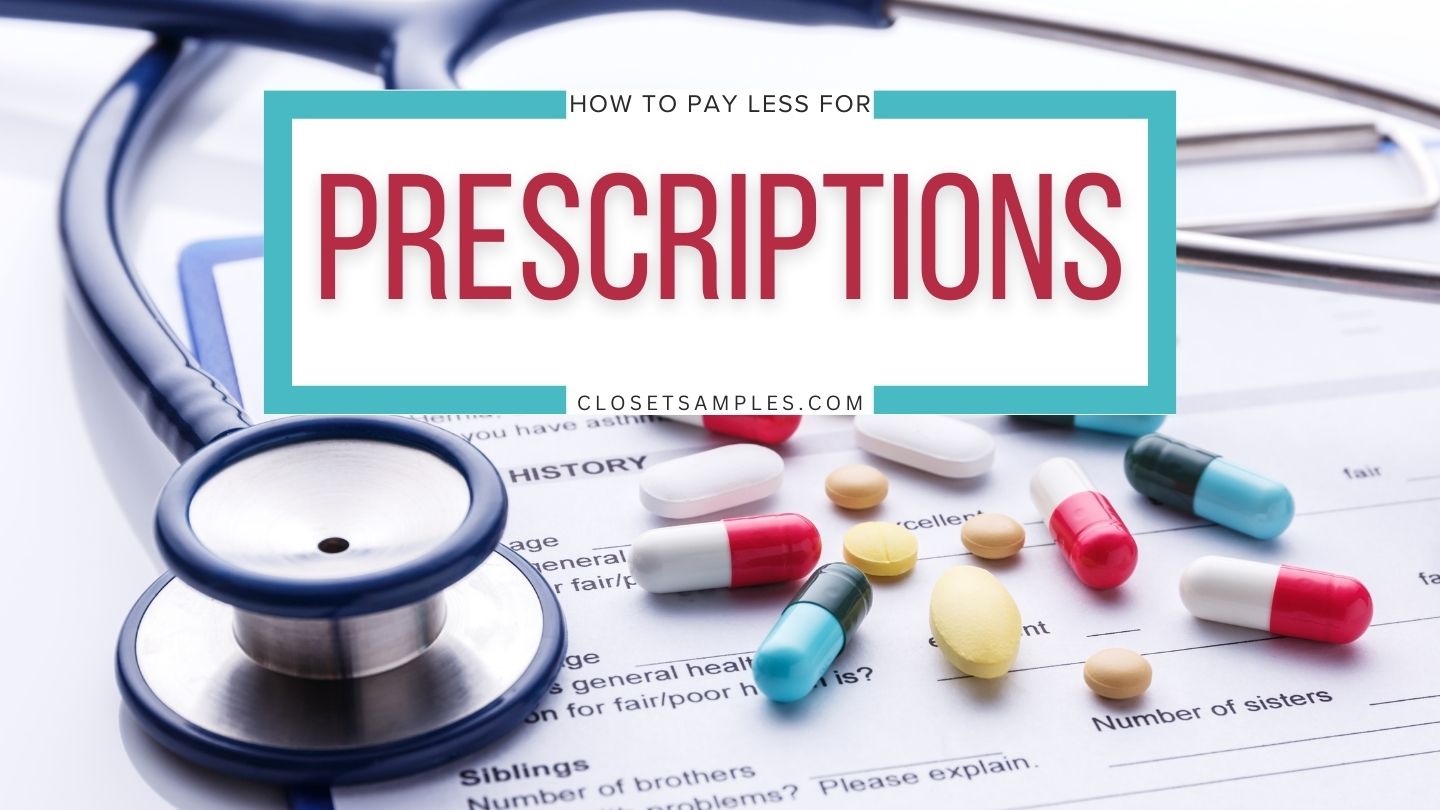
 Image credit: Freepik
Image credit: Freepik Image credit: Freepik
Image credit: Freepik Image credit: Freepik
Image credit: Freepik
 Image credit: Freepik
Image credit: Freepik
 Image credit: Freepik
Image credit: Freepik Image credit: Freepik
Image credit: Freepik Image credit: Freepik
Image credit: Freepik  Image credit: Freepik
Image credit: Freepik  Image credit: Freepik
Image credit: Freepik  Image credit: Freepik
Image credit: Freepik  Image credit: Freepik
Image credit: Freepik  Image credit: Freepik
Image credit: Freepik  Image credit: Freepik
Image credit: Freepik  Image credit: Freepik
Image credit: Freepik Image credit: Freepik
Image credit: Freepik
 Image credit: Freepik
Image credit: Freepik  Image credit: Freepik
Image credit: Freepik  Image credit: Freepik
Image credit: Freepik  Image credit: Freepik
Image credit: Freepik 
 Image credit: Freepik
Image credit: Freepik 


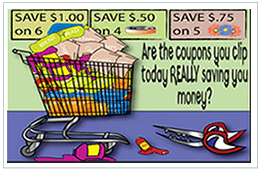 Here you will find all the best coupon advice, tips and how to make the most of all your coupons!
Here you will find all the best coupon advice, tips and how to make the most of all your coupons! Are you looking for ways to stretch your dollar?
Are you looking for ways to stretch your dollar? 

